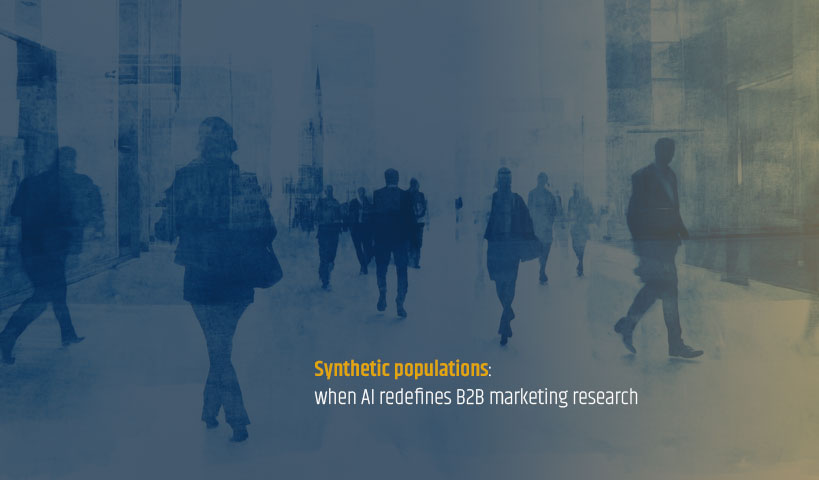
Qualitative research is designed to go around a topic and to represent what population to study. When I mention this, our customers tend to believe that qualitative research is not for them. However, it is often very useful and should be considered for research mandates.
Recently, a client gave me a sketch of what he would like for his next marketing research, such as research objectives, suggestions of questions, methodology, etc. For the methodology, the client suggested to 15 telephone interviews with its customers and potential customers by stating: the more respondents we have, the better probabilistic the results will be… and I clarify: pay attention to what you say! Developing a so-called qualitative methodology is not the goal.
What is qualitative research?
Qualitative research consists of interviews with a target group. These interviews are called in depth, that is, the answers are not limited to: Yes/No, on a scale of 1 to 7, please check the following items. We want people to talk to us!
|
Qualitative questions |
Quantitative questions |
| In General, what do you think of company XYZ?To keep you informed on what’s new in your industry, we want to know: do you read any magazines? If Yes, which ones? | On a scale of 1 to 7 (1 = disagree, 7 = completely agree), would you say that you like to do business with company XYZ?Among the list of magazines below, please select the ones you read:
|
Often, I compare the qualitative research to a kind of interview with a psychologist. My questions are open which allows the respondent to express themselves in complete sentences, which I’ll then summarize and present to my client. Most of the time, we carry out semi-controlled interviews. This means that one questions respondents around themes, predefined and recorded in a maintenance manual.
What is the goal of qualitative research?
Remember this phrase: qualitative research is intended to be representative of a subject and not of a population!
So when my client says that the more respondents we have, the better probabilistic the results will be, this is only half-true because this isn’t actually the goal! We want our study to represent the subject in question.
I would really like to take the pulse of potential customers/clients; in this case, the qualitative research serves nothing to me?
Wrong! Qualitative research is often part of an approach known as exploratory, meaning that it will guide and complete a second search, quantitative!
Why guide and complete a quantitative research? There are several reasons for this: to make sure that we are going to validate the correct information in the quantitative search, to be sure that there is no shortage of important information and of course, to offer greater richness to the report submitted to the client.
OK, and how are you going to present me with a qualitative research report? In book form?
Well, of course not! The qualitative research reports are presented in summary format, by topic and aspects. Is all of this abstract for you? Preach by example:
You want to address the following theme: the opinion of people in general about my business.
We interviewed 3 respondents who said:
Respondent 1: It is a fantastic company! They also have a great team that responds quickly to the telephone. Ms. Tremblay is always available when needed. Their products are great and super efficient. On the other hand though, they are a bit expensive!
Respondent 2: I love the company and the team, they are always very nice. Their products do work very well. However, the cost is 25% more than competing products, so I cannot always acquire these products and I have to buy them from the competition instead.
Respondent 3: I think it is a good company and pleasant to work with. Very good reputation in the market also!
Here is what you should have in your report:
|
Aspects |
Characteristics |
Relevance |
Relevance |
| Good opinion in general of the company |
|
3 |
27,7 % |
| Satisfied with the customer service |
|
3 |
27,7 % |
| Satisfied with the product |
|
2 |
18,18 % |
| More expensive products |
|
2 |
18,18 % |
| Good reputation on the market |
|
1 |
9,09 % |
As you can see, the relative importance is calculated based on content and not on the basis of the number of respondents. On the other hand, when asked the question, I’ll often mention the number of respondents who have had this assertion (reminding you again, this is not the goal!)
In the best of worlds, we would survey 200 people, but you can only imagine the magnitude of tasks that this would represent (and the huge bills that would be waiting for you). This is why it is better to make some qualitative interviews (for example, 9), followed by a quantitative to validate or disprove some things found in the qualitative. In this second study, you can then dream of a larger study.




